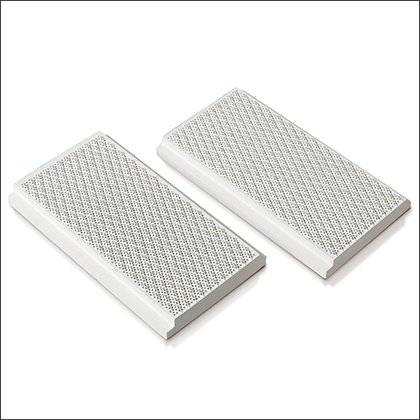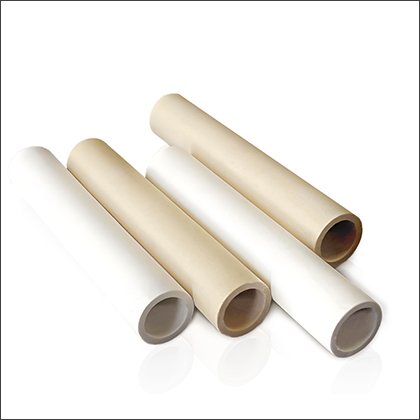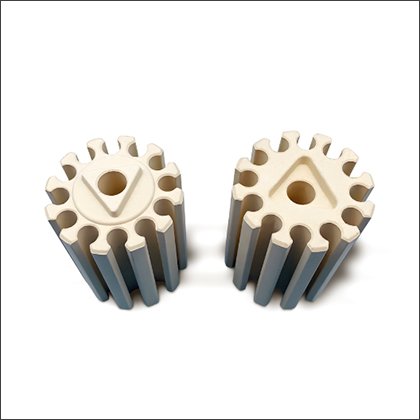Material Overview
Cordierite (2MgO.2Al2O3.5SiO2) is a magnesium aluminum silicate ceramic renowned for its ultra-low thermal expansion, exceptional thermal shock resistance, and chemical stability. With a density range of 2.05 g/cm³ and a thermal expansion coefficient as low as 1~3×10⁻⁶/°C, it is widely used in automotive, aerospace, and industrial applications where rapid temperature changes and harsh environments are common.
| Property | Cordierite |
| Density (g/cm³) | 2.05 |
| Flexural Strength (MPa) | 55 |
| Modulus of Elasticity (GPa) | 140 |
| Thermal Conductivity (W/m·K) | 1.6 |
| Max. service temperature (℃) | 1300 |
| Dielectric Strength (kV/mm) | 19 |
Ultra-low thermal expansion and thermal shock resistance are the most prominent characteristics of cordierite ceramics. Jinghui uses cordierite materials mainly for ceramic burner plates.
Key Features
- Thermal Shock Resistance: Withstands rapid temperature fluctuations up to 350°C without cracking, ideal for catalytic converters and kiln furniture.
- Low Dielectric Loss: Electrical resistivity >1014 Ω·cm ensures reliability in high-voltage insulators and electronic substrates.
- Chemical Inertness: Resists acids, alkalis, and molten metals, extending lifespan in corrosive environments.
- Lightweight Design: 40% lighter than alumina, reducing energy consumption in rotating machinery.
Applications
- Automotive: Catalytic converter substrates (85–87% cordierite content) for emission control.
- Electronics: Insulators and circuit boards for high-frequency devices.
- Industrial: Kiln shelves, thermocouple tubes, and refractory supports.
- Aerospace: Radomes and thermal protection systems due to low thermal conductivity.
Manufacturing & Customization
- Sintering Techniques: Single-stage sintering at 1,350°C achieves 95% theoretical density.
- Doping Additives: Ceria (CeO₂) doping improves fracture toughness by 30% (up to 2.8 MPa√m).
- Custom Shapes: CNC-machined components with tolerances ±0.02 mm for precision applications
Cordierite’s ultra-low thermal expansion (1~3×10⁻⁶/°C) prevents cracking during rapid heating (e.g., exhaust systems reaching 1,000°C in seconds). Its honeycomb structure maximizes surface area for catalytic reactions while maintaining structural integrity under thermal cycling. Studies show cordierite substrates reduce backpressure by 20% compared to metal alternatives, improving fuel efficiency.
The cordierite honeycomb ceramic burner plate is made of natural inorganic materials. It will not release harmful substances at high temperatures (less than 1300°C), is non-toxic and odorless, and meets food-grade safety standards. Its honeycomb structure can promote full combustion and reduce the generation of waste gases such as carbon monoxide. It is an environmentally friendly and durable clean combustion material suitable for barbecues, household gas equipment, and other scenarios.
The choice of raw materials, such as talc, kaolin, and alumina, directly impacts porosity and thermal properties. For example, pre-calcining talc at 800°C reduces impurities, enhancing phase purity (>85% cordierite content) and thermal shock resistance.
Yes. Cordierite’s non-porous structure and chemical inertness resist sulfuric acid (pH <1) and molten salts. In chemical processing plants, cordierite thermocouple tubes show <0.1% weight loss after 5 years of exposure. Its low ionic diffusion rate also prevents contamination in semiconductor manufacturing.






